Words Sarah Langton-Lockton Photographs Lisa Valder and Frances Moskovits

A lavish intensity of colour typifies the life-enhancing l dahlia
Until a few years ago, Henry Bryant was a fruit grower and turkey farmer, growing apples, pears, cherries, plums, blackcurrants for Ribena, cobnuts and asparagus, and raising 10,000 free-range turkeys for Christmas on the fertile acres of the farm in Staplestreet that his grandfather started around the time of the First World War. Henry and his second wife Heather still live in the elegant Victorian villa overlooking the orchards that are now contract farmed. Recalling how his love of growing and showing dahlias began, Henry says: ‘It engulfed me in retirement when I suddenly had the time and inclination to do it.’
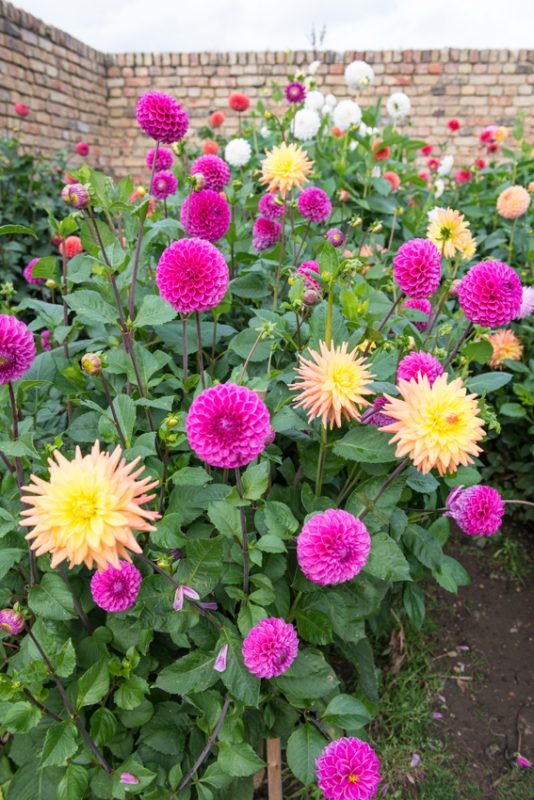
Striking colour and form
Dahlias have had an up-and-down history, mostly up, it is pleasing to note. John Claudius Loudon, botanist, plant hunter and writer, whose books were the bibles of 19th century gardeners, described dahlias as ‘the most fashionable flower in this country.’ Their popularity only waned in the mid-20th century when their riotous colours offended the arbiters of gardening good taste, who would shudder slightly while pronouncing them ‘common’.
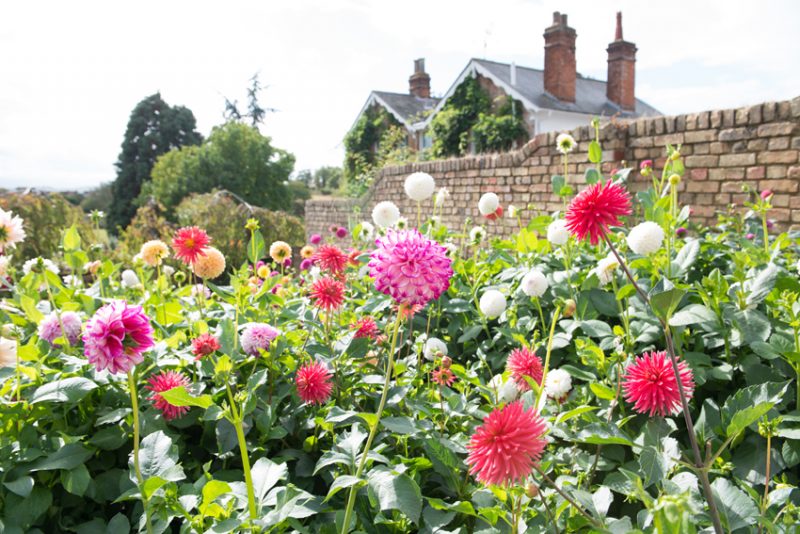
Dahlias flourish in the shelter of a wall. The Bryants’ house features in the background
Fortunately for those of us who rejoice in colour in our gardens, the revered Christopher Lloyd blasted through such prejudices when in 1992 he replaced the ageing roses planted by his mother at Great Dixter with an exotic garden bursting with tropical foliage. Flourishing there ever since are the Japanese banana, Musa basjoo, amid the blazing colour of cannas and dahlias, the piercing blue of the Mexican morning glory, Ipomoea tricolor, and the airy purple spikes of Verbena bonariensis. ‘No pastel shades for me here,’ he wrote, ‘but instead dazzling reds, oranges and magentas.’
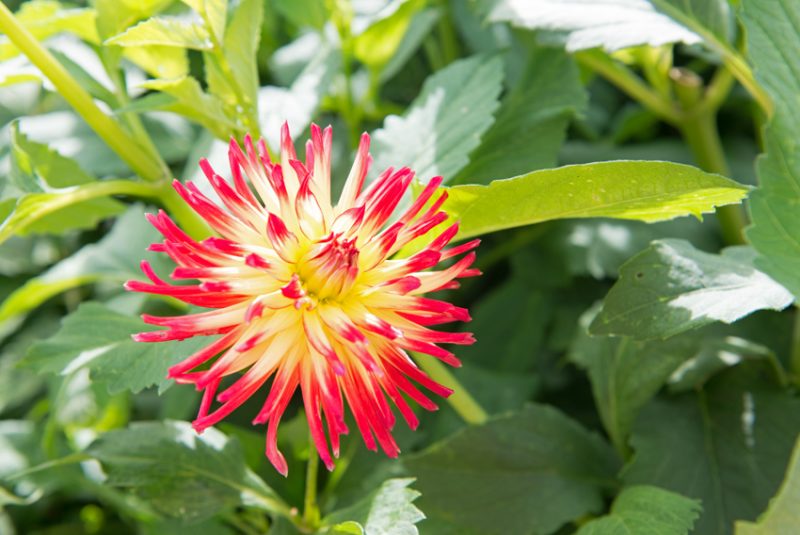
Uncompromising colour
It was the glamour and uncompromising colour of the dahlias he saw on a visit to Victoria with Heather (she hails from Adelaide) that first sparked Henry’s interest. ‘I thought then it would be great to have dahlias like that.’ Some time later, about four to five years ago, he says, his gardener Roger brought in some blooms of the blissfully scarlet Dahlia ‘Kenora Ruby’. ‘They were so striking I thought we must have some.’ Various tubers were duly ordered from de Jager and planted out. Roger brought more tubers and then ‘a whole lot from the garden of an old mucker of his who was moving.’
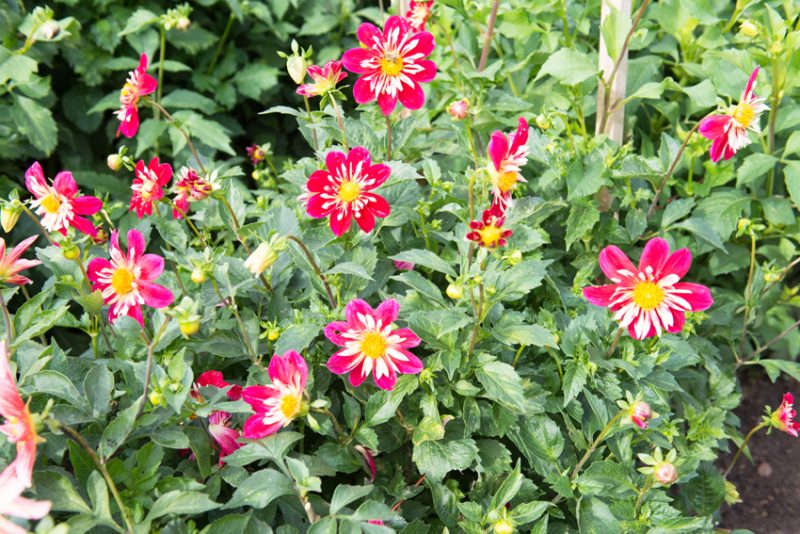
Collarette dahlias with their inner ring of contrasting colour
Roger also said that if Henry wanted to do it really well he should order from dahlia specialists Halls of Hedden in Northumberland. ‘Off my own bat I got some rooted cuttings.’ Roger also shared his list. ‘I thought if they’re good enough for Roger, they’re good enough for me.’ ‘Roger,’ he observes, ‘was leading me deeper and deeper into it.’
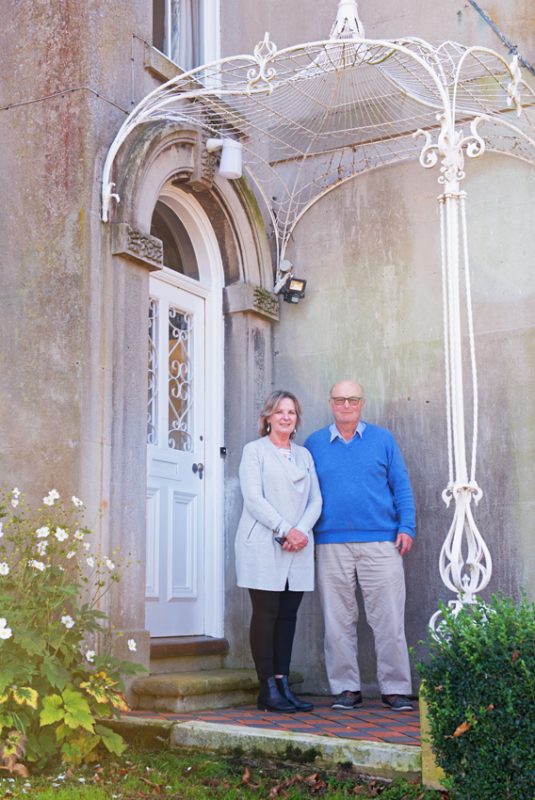
Henry and Heather outside their elegant villa
Henry grows his dahlias in a four-feet deep bed backed by a low wall. Sweet peas, which he also grows, go in first. When they are dug up at the end of July, in go the dahlias. They are densely planted to provide mutual support. Liberal quantities of turkey dung get them off to a flying start. ‘My guru, Roger,’ comments Henry, ‘says you can’t give dahlias too much feed or too much water.’ Henry started showing his dahlias at Hernhill Horticultural Society events. ‘You start off by saying you’ll just help, and are then gripped by competitive fervour.’
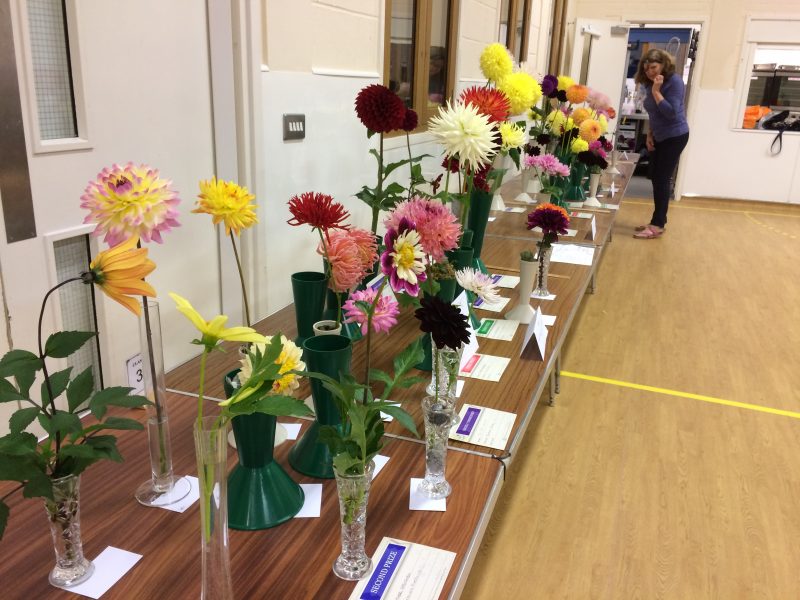
Painter’s Forstal Gardeners’ Club Annual Dahlia Competition 2019: prizewinners on parade
Painter’s Forstal Gardeners’ Club, which runs a lively and popular programme of shows, talks and outings, has been holding its annual Dahlia Competition since 2015. Each year the quality of the entries and their staging improves thanks to the generous sharing of his knowledge by show judge Quentin Stark, Head Gardener at Hole Park Gardens, an expert dahlia grower and propagator. Dahlias come in a range of types, with distinctive characteristics. There are Cactus and Semi Cactus varieties, which have pointed petals with recurved edges, the lavish Decoratives, such as the fashionable ‘Café au Lait’, the Singles, which include the elegant Honkas, the Balls and smaller Pompons, known as ‘golf balls on sticks’, and quite a few more, Collarettes, Waterlilies and Anemones among them.
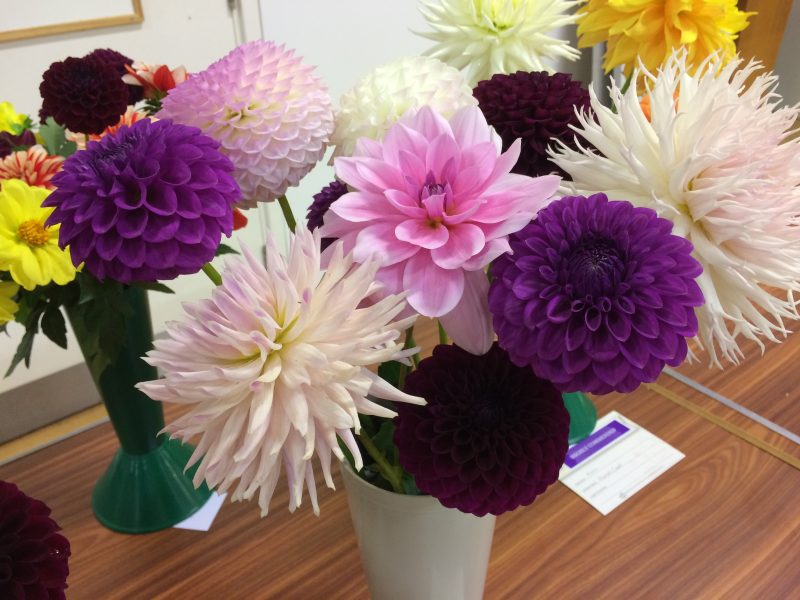
A stunning vase of mixed dahlias
Exhibitors are allowed two entries in each of the eight classes and have an hour in which to stage their exhibits. Careful staging is a key to success – you can’t just plonk your blooms into a club vase and hope for the best. Experienced exhibitors bring pre-dampened newspaper or florist’s foam (Oasis) into which they gently insert their dahlias, chosen for their blooms of similar size and aspect.
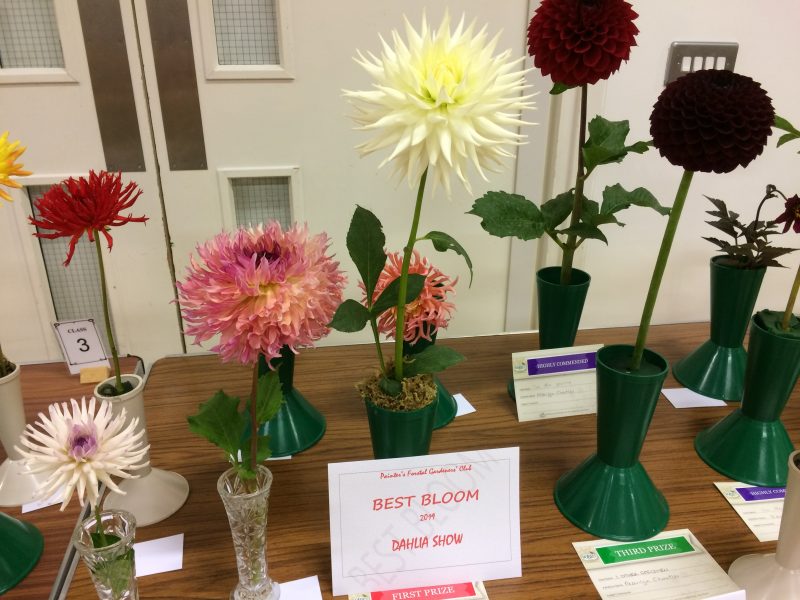
A perfect specimen dahlia in one of the few classes not won by Henry
‘The first time I did it people said to bring some Oasis and a screwdriver to stick in to make holes for the dahlias,’ says Henry. Secateurs, scissors and tweezers now form part of his kit and he concedes that staging is a serious and absorbing task. At the Painter’s Forstal Gardeners’ Club 2019 Dahlia Competition held on 9 September at Lorendon School Hall, Henry won first prize in half of the classes. He also won first prize in the amateur gardeners section at the annual National Dahlia Society Show at Wisley in 2018.’ He plans to take on the professionals later this year. ‘I want to get the dahlias up to standard so I can go to Wisley and give them a run for their money.’ No doubt he will. Like all really good gardeners, ‘I’m still a learner,’ he says.
www.paintersforstalgardenersclub.org.uk
Words: Sarah Langton-Lockton Photographs: Lisa Valder and Frances Moskovits